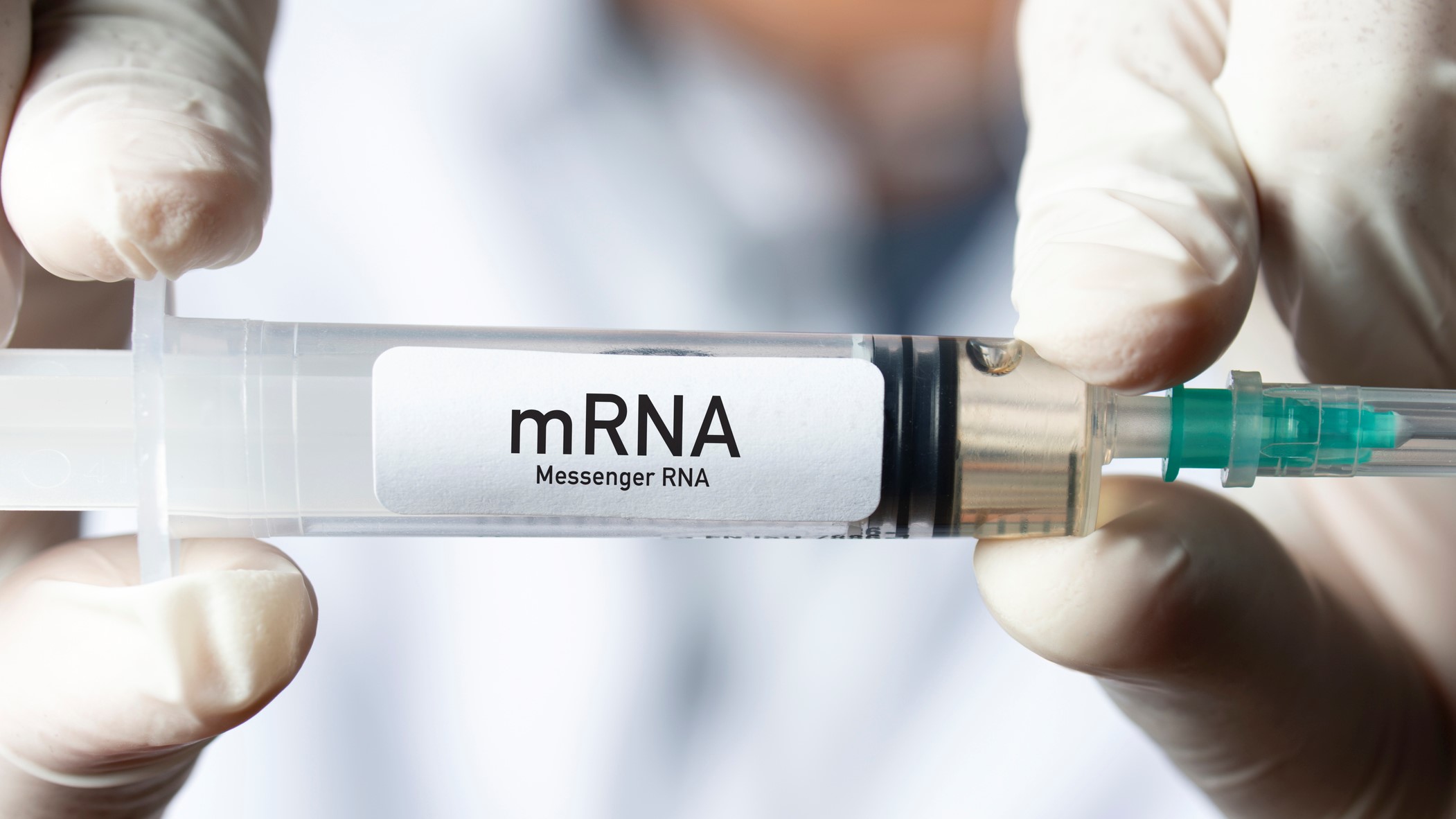The rise of mRNA technology
October 2021 (slightly revised December 2021) by Dragan Filimonovic and Christian Rutzer

The science of mRNA gained a lot of attention during the ongoing pandemic. Two mRNA vaccines have proven their efficacy against Covid-19 and for the first time in history this technology was used to battle a disease on a large scale. This important milestone could mean the beginning of a new era - the era of mRNA based medical treatments. In the following, we show how innovations in that technology have increased over time and which countries and companies play an important role.
As Figure 1 indicates, the rapid development of the mRNA technology is manifested in an increasing number of patent applications relative to all pharma patent applications at the US patent office (USPTO) in the past several years. This surge in innovation is likely one reason why mRNA based vaccines against Covid-19 have been developed at a record pace. The success of the mRNA technology in vaccinating against Covid-19 could now lead to new breakthroughs in other areas as well, particularly in cancer therapy.
Click here to get a description of how we detect mRNA-patents
Figure 1: Strong increase of mRNA patent applications relative to pharmaceuticals
Sources and notes: Own estimations of the CIEB using data on patent applications filed at the USPTO. The data shown in the plot is available on Github.
Against this background, the question arises which research hubs are mainly responsible for developing this (possibly) breakthrough medical treatment technology of the future. In order to check which country-level pharma eco-systems are the most active ones in developing the mRNA technology, we plot the share of mRNA based patent applications in a country’s overall pharmaceutical patent applications filed at the USPTO.
Figure 2: Germany has a strong focus on mRNA based technologies
Sources and notes: Own estimations of the CIEB using data on patent applications filed at the USPTO. The data shown in the plot is available on Github.
Three interesting conclusions may be drawn from Figure 2. First, the Western world drives the mRNA-patenting activity compared to big Asian research hubs. Second, until 2014, the USA had the largest (relative to domestic pharma patents) share of mRNA based patent applications at the USPTO. Third, since 2015, Germany’s pharmaceuticals have strongly focused on developing and patenting mRNA based technologies, becoming world-wide the industry that is most focused on developing and patenting mRNA based technologies. Nonetheless, the USA remains the largest mRNA patenting hub where roughly 60% of all USPTO mRNA patent applications are developed (you can investigate this in the Figure 2 by choosing Share in total mRNA). However, Germany is rapidly catching up over the last three years.
Germany’s pharmaceuticals have strongly focused on developing and patenting mRNA based technologies
In addition to the aggregated country perspective, it is utterly important to identify and acknowledge the world’s leading pharmaceutical organizations in the field of mRNA technology. The following graph presents the 15 firms and universities with the largest number of filed mRNA patent applications at the USPTO between 2012 and 2020.
Figure 3: Universities play a significant role in mRNA patent applications
Sources and notes: Own estimations of the CIEB using data on patent applications filed at the USPTO between 2012 and 2020. The data shown in the plot is available on Github.
Most patent applications were filed by Curevac and Moderna, both appeared as vaccine developers during the Covid-19 pandemic, even though only Moderna’s ultimately got an approval.
Universities are very active in mRNA-related patent applications
It is also very interesting to observe that there is only one large pharmaceutical firm among the top 15 patent applicants - Novartis. This demonstrates that mRNA based medicine is an emerging technology mainly developed and advanced by startups and small pharma companies. The fact that universities are also very active in mRNA-related patent applications substantiate this impression and highlights the importance of academic research for the emergence of new technologies in general.
What could this mean for Switzerland?
According to an article in the Economist by Ozlem Tureci and Ugur Sahin (the founders of BioNTech SE), in 15 years one third of all new approved drugs could be based on the mRNA technology. Despite the great potential, however, the mRNA technology seems not to be in the focus of the Swiss pharmaceutical industry. Instead, the US and, increasingly, innovations from Germany dominate the field. Hence, it could be that the Swiss pharma-hub is largely missing out on one of the next big things in pharmaceuticals.
Did you like this article?
Share it with your friends and colleagues on Social Media
This article was written using R Markdown, R shiny and Plotly. Detection of mRNA-patents were performed at sciCORE scientific computing center at the University of Basel. We thank Matthias Niggli for valuable feedback.